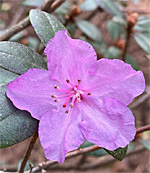Freedom’s Gardener: James F. Brown
 Dr. Myra Young Armstead, Professor of History, Director of Africana Studies at Bard College will talk about her book Freedom’s Gardener: James F. Brown, Horticulture and the Hudson Valley in Antebellum America at the Jay Heritage Center, 210 Boston Post Road, Rye, New York, from 10 a.m. to 12:30 p.m. February 8, 2014.
Dr. Myra Young Armstead, Professor of History, Director of Africana Studies at Bard College will talk about her book Freedom’s Gardener: James F. Brown, Horticulture and the Hudson Valley in Antebellum America at the Jay Heritage Center, 210 Boston Post Road, Rye, New York, from 10 a.m. to 12:30 p.m. February 8, 2014.
She will share insights from her research about the free black experience in 19th century New York as revealed in a handwritten diary kept for almost four decades by James F. Brown. Brown, a fugitive slave eventually purchased his own freedom with the help of the Verplanck family and found himself associated with one of America’s earliest landscape designers, AJ Downing.
Not only did Brown achieve financial independence as a master gardener and purchase the freedom of his wife, he became a landowner as well. On November 8, 1837, he recorded in his diary that he had voted for the first time.
Of great interest to historians studying the Jay family and their properties, Brown wrote in his diary in March 1832, one year after having been manumitted, that he had gone “to live with Peter A. Jay…” It is highly likely that he spent time at the Jay Estate in Rye, then called “The Locusts” and perhaps left an imprint of his own horticultural knowledge on its landscape.
Professor Armstead is a graduate of Cornell University and received her Masters and Ph.D. from the University of Chicago. She specializes in U.S. social and cultural history, with an emphasis on urban and African American history.
The 23-acre Jay property overlooking Long Island Sound in Rye is the boyhood home of New York State’s only native founding father, John Jay (1745-1829). It is part of the Boston Post Road Historic District, a National Historic Landmark and a stop on Westchester County’s African American Heritage Trail. The 1838 Greek Revival mansion, which is the centerpiece of the property, was built by Peter Augustus Jay. The mansion is being restored and managed by the not-for-profit organization, the Jay Heritage Center.







